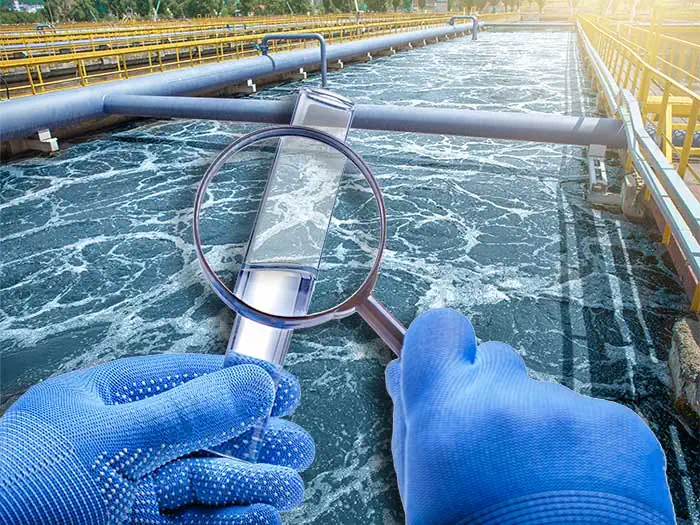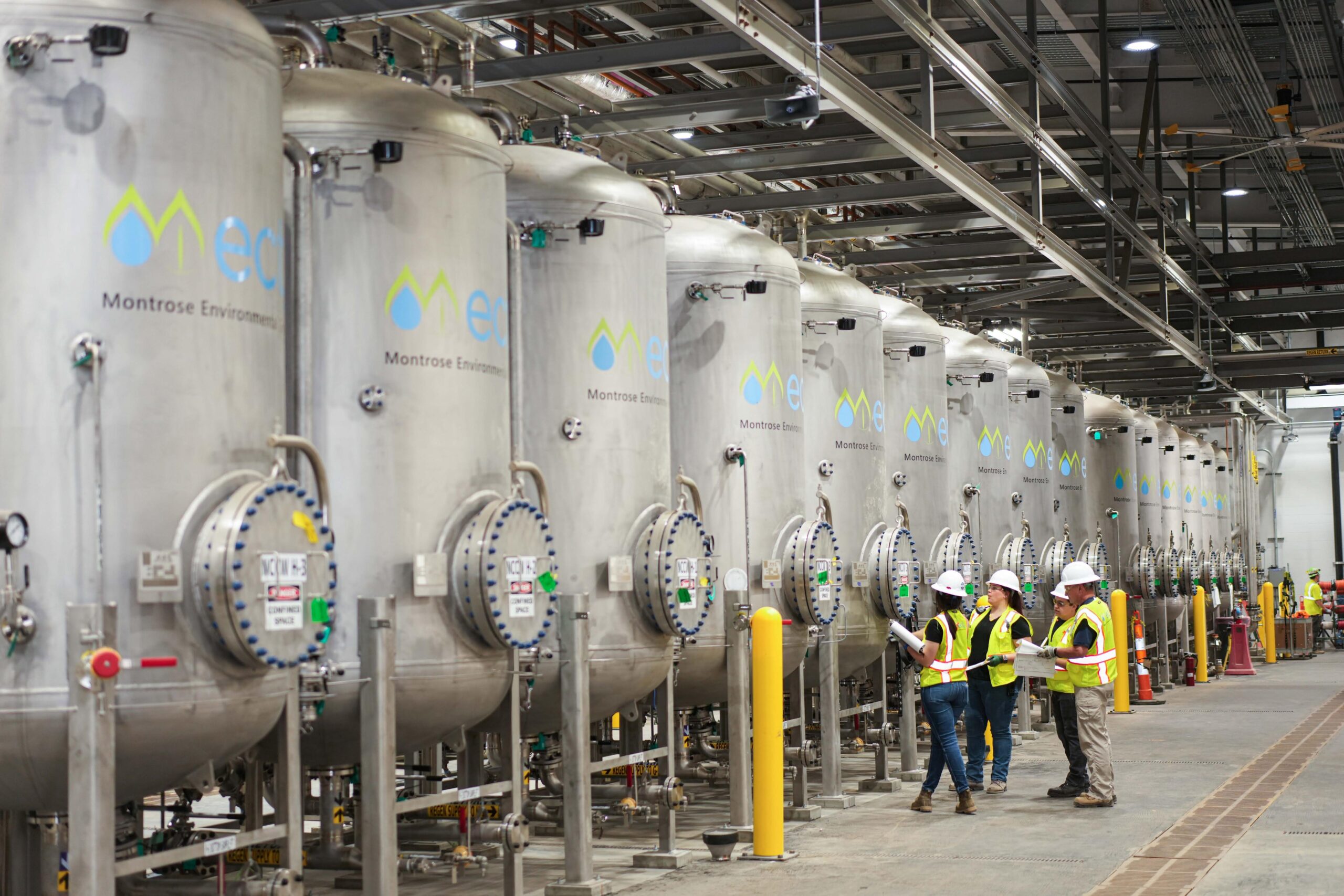Best Practices for PFAS Waste Management at Industrial Sites
Wiki Article
Just How PFAS Therapy Ensures Clean and Sustainable Water
The existence of PFAS, commonly known as "permanently chemicals," presents significant difficulties to water top quality and public wellness. The effects of these treatments expand past prompt wellness benefits; they elevate crucial inquiries about lasting water management techniques that should be resolved to guarantee a resistant future.
Comprehending PFAS Contamination
PFAS, or per- and polyfluoroalkyl materials, have actually become a considerable environmental problem as a result of their extensive frequency and determination in the environment. These synthetic chemicals have been utilized in various commercial applications and consumer items, including non-stick cookware, waterproof apparel, and food packaging, because of their distinct residential properties such as water and oil resistance.The contamination of soil and water sources by PFAS takes place largely with commercial discharges, firefighting foam usage, and seeping from land fills. pfas management. As soon as launched, these substances are immune to deterioration, leading to their build-up in the setting. This persistence raises essential problems, as PFAS can take a trip fars away via groundwater and surface area water supply, influencing alcohol consumption water products and ecosystems

Health And Wellness Risks of PFAS
The persistence of PFAS in the atmosphere increases substantial wellness concerns for individuals exposed to these substances. Research has actually linked PFAS direct exposure to numerous unfavorable health impacts, including immune system disorder, liver damage, and enhanced danger of certain cancers.The ubiquity of PFAS in consumer items, such as non-stick cooking equipment, water-repellent fabrics, and food product packaging, further magnifies the threat of direct exposure. Consuming alcohol water contaminated with PFAS is a significant problem, as these chemicals can leach right into groundwater resources. Susceptible populations, consisting of children and those living near industrial sites, may face increased dangers because of their establishing systems and possible for greater direct exposure degrees.
As recognition of these health risks continues to grow, regulatory firms are beginning to establish standards for PFAS degrees in alcohol consumption water. Public health and wellness efforts are vital to reduce exposure and protect neighborhoods from the long-term effects of these dangerous substances.

Innovative Treatment Technologies
How can we effectively tackle the challenges positioned by PFAS contamination in water resources? Innovative treatment modern technologies are arising as essential solutions in the pursuit for clean water. These approaches concentrate on the removal or destruction of per- and polyfluoroalkyl compounds (PFAS), which are notorious for their determination in the environment.One encouraging approach is adsorption making use of sophisticated materials, such as turned on carbon and ion exchange resins. These products have actually shown efficacy in recording PFAS particles from water. Another significant modern technology is membrane layer purification, which uses nanofiltration and reverse osmosis to different contaminants at the molecular degree, hence supplying a barrier versus PFAS.
Additionally, advanced oxidation processes (AOPs) employ strong oxidants to damage down PFAS compounds right into safe byproducts. This technique is particularly efficient for dealing with very polluted water resources. Bioremediation techniques, using specific bacteria, are likewise being checked out to degrade PFAS.
As research proceeds, crossbreed systems that incorporate numerous technologies may offer boosted performance, addressing the complexities of PFAS contamination. The advancement and execution of these ingenious treatment modern technologies are essential actions towards making sure the safety and sustainability of our water resources.
Advantages of Reliable PFAS Therapy
Properly dealing with PFAS contamination in water sources dramatically boosts public health and ecological safety and security. PFAS, typically described as "forever chemicals," are resistant to destruction and can build up in the human body, resulting in significant wellness threats such as cancer cells, liver damages, and immune system pfas management disorder. By executing effective therapy methods, communities can decrease exposure to these dangerous compounds, inevitably boosting the health results of their populations.
Additionally, effective PFAS treatment adds to the conservation of regional environments. Polluted water can negatively affect water life and disrupt the delicate balance of regional environments. By making certain clean water, therapy procedures protect biodiversity and keep environmental integrity.
In addition, reliable PFAS removal can cultivate public self-confidence in water top quality. When areas are assured that their alcohol consumption water is without damaging impurities, it advertises a feeling of security and health. This depend on is important for area engagement and support for recurring water monitoring efforts.
Future of Water Sustainability
Amidst expanding worries regarding water high quality and deficiency, the future of water sustainability pivots on cutting-edge approaches and collaborative efforts. As communities encounter the impending risks of impurities like PFAS, the advancement of advanced therapy innovations is important. These modern technologies not only concentrate on the removal of harmful compounds yet additionally advertise the reuse and recycling of water, thereby minimizing general need.Furthermore, effective water administration plays an important function in ensuring lasting methods. Policymakers have to incorporate scientific study with regulatory structures to establish clear guidelines for water usage and treatment. Stakeholder engagement, including local areas and sectors, cultivates a feeling of common duty and urges lasting methods throughout different fields.
Financial investment in infrastructure is additionally critical; upgrading aging systems to integrate contemporary purification and filtration methods can considerably boost water quality. Additionally, embracing environment-friendly modern technologies, such as natural filtration systems, can give green remedies.
Ultimately, the future of water sustainability hinges on a holistic approach that integrates modern technology, policy, and area participation. By prioritizing these aspects, we can secure our water resources for generations to come, making certain clean and sustainable water for all.
Final Thought
In verdict, the effective treatment of PFAS is essential for making certain tidy and sustainable water. Ultimately, robust PFAS treatment techniques contribute to long-lasting strength in water monitoring, cultivating public count on in water high quality and promoting lasting techniques.Report this wiki page